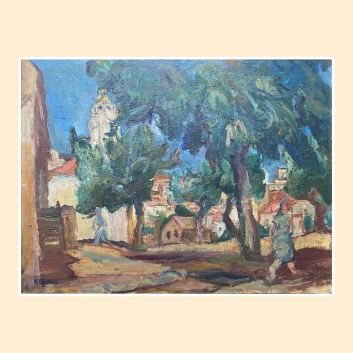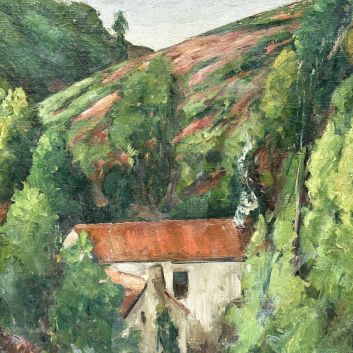Rating and value of paintings by Maximilien Luce
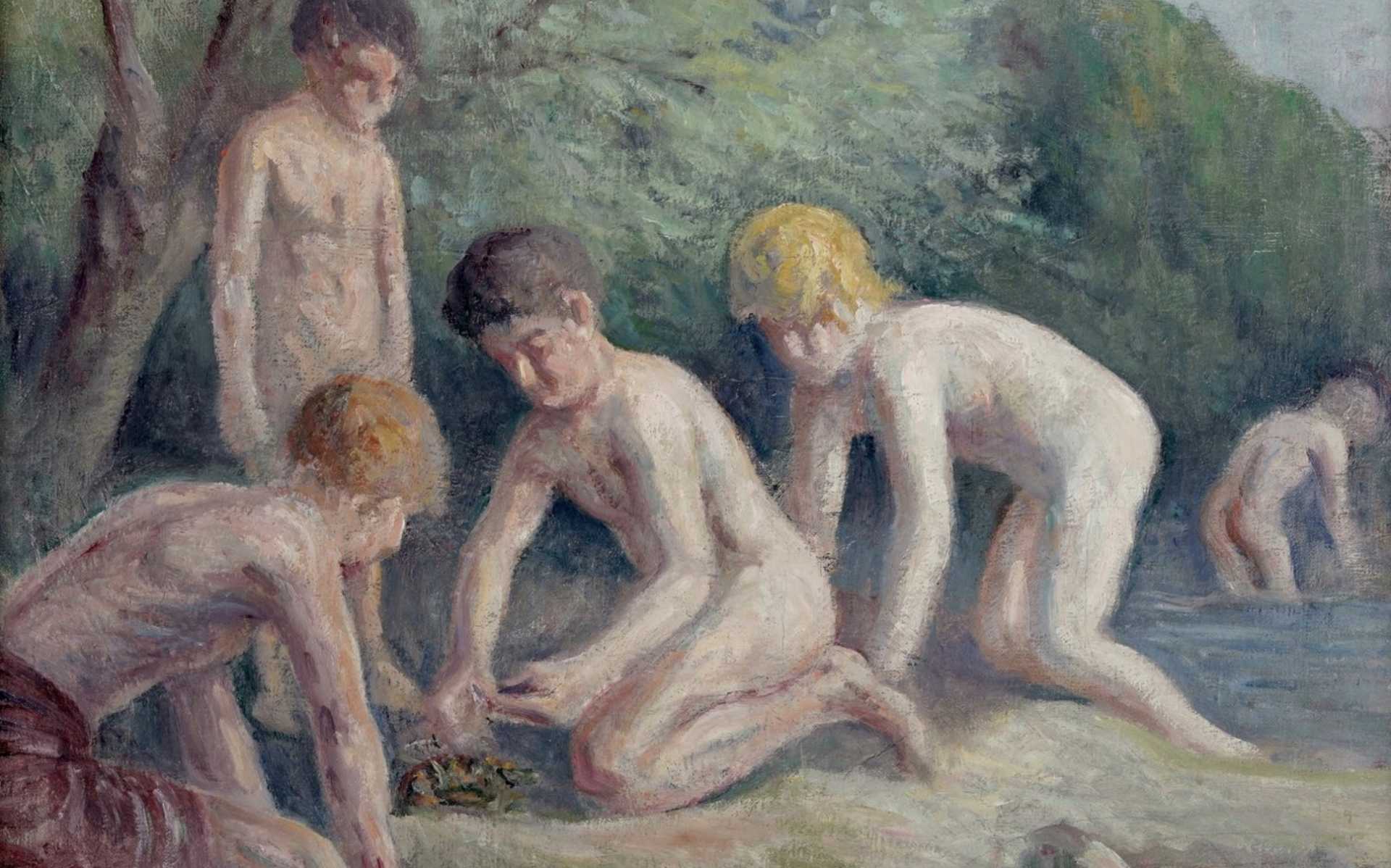
If you own a work by or based on the artist Maximilien Luce and would like to know its value, our state-approved experts and auctioneers can help you.
Our specialists will carry out a free appraisal of your work, and provide you with a precise estimate of its current market value.
Then, if you want to sell your work, we'll point you in the right direction to get the best possible price for it.
Artist's rating and value
Maximilien Luce's work is quite present and quoted on the auction market. His works arouse interest among collectors and art lovers, particularly those who appreciate the postimpressionist movement and the artist's social commitment.
The most sought-after pieces are depictions of working-class scenes, urban landscapes and industrial subjects, with prices ranging from €20 to €3,500,000.
A work by Maximilien Luce can fetch millions of euros at auction, like his painting Baigneuse à Saint Tropez, which sold for over 3 million euros in 2022.
Order of value from the most basic to the most prestigious
Technique used | Results |
|---|---|
Print - multiple | From €20 to €6,424 |
Drawing - watercolor | From €20 to €114,337 |
Oil on canvas | From €120 to €3,508,858 |
Response in less than 24h
Luce's scientific divisionism
Divisionism, as practiced by Maximilien Luce, is based on a scientific approach to color and light.
Inspired by the work of Camille Pissarro, Gustave Cariot and Paul Signacand the chromatic theories of Neo-Impressionism, he adopted this technique in the 1890s, in which colors are not mixed on the palette, but directly on the canvas.
Each meticulously applied touch of pure paint creates vibrant lighting effects.
This process differs from simple pointillism in the precision and rigor with which complementary colors are juxtaposed, forming chromatic harmonies of great intensity.
For Luce, divisionism became a means of capturing light with a new sensitivity. The juxtaposition of colors, without prior mixing, plays an essential role in the perception of the scenes he depicts.
Carefully applied brushstrokes reveal an in-depth understanding of lighting effects and contrasts. This scientific method, based on the principles of light decomposition, enables him to render reality while sublimating it, giving his landscapes and urban scenes a dimension that is both realistic and poetic.
In her depictions of factories and industrial landscapes, Luce applies this technical language with an acute sense of detail. The factory scenes, bathed in cold or warm light depending on the time of day, come to life thanks to this subtle play of colors.
Each scene is constructed with the precision of a scientist, but the end result goes beyond mere illustration: it's a veritable exploration of light and matter, where the viewer's eye becomes the site of the fusion of hues.
Using divisionism, Luce not only sought to capture reality, but to reveal the beauty of the simplest elements of everyday life.
The precision of his touch, inherited from scientific theories, is at the service of a poetic vision of the modern world, where light becomes a character in its own right, structuring and animating space.
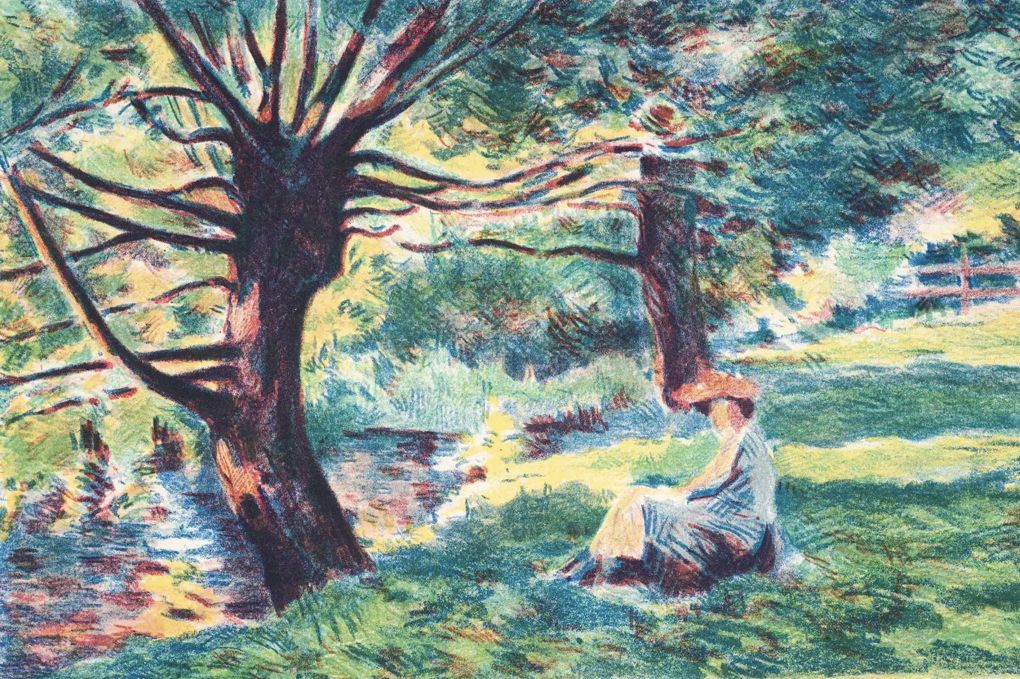
The life of Maximilien Luce
Maximilien Luce was born into a family of craftsmen in Paris in 1858. He was soon drawn to drawing and apprenticed as a wood engraver. After several years of practice in an engraver's workshop, Luce devoted himself entirely to painting in 1880.
Highly involved in anarchist circles, Maximilien Luce produced numerous drawings for political newspapers and took part in the ideological conflicts of his time.
Inspired by Camille Pissarro and a circle of artists he frequented in the 1890s, Luce adopted the path of Post-Impressionism.
Although the artist appreciated Nicolas Poussin's painting, Luce was attracted by the technique of divisionism, characterized by strokes and juxtapositions of complementary colors creating luminous vibrations - very close to pointillism.
He depicts workers at work in the factory or in the fields, or taking a break from their laborious lives, as in the painting Gare de l'Est.
Although he uses the pointillist technique and follows in the Impressionist footsteps, he is nonetheless inspired by the social realism established by Gustave Courbet in the 19th century, which aimed to give pictorial representation to those who did not benefit from it.
Maximilien Luce died in 1941, leaving behind a prolific artistic output.
Focus on La Seine à Herblay, Maximilien Luce
In La Seine à Herblay, Maximilien Luce transports us to a calm, luminous landscape, where the Divisionist technique comes into its own. This late 19th-century canvas perfectly illustrates the artist's scientific approach to color and light.
The painting captures a peaceful moment on the banks of the Seine, with its reflections in the water and natural light playing on the river's surface. By choosing to depict an ordinary scene, Luce seeks to sublimate the simple beauty of nature, while emphasizing the interplay of natural elements.
The painting is a masterly demonstration of the Divisionist technique. Strokes of pure color are meticulously applied to the canvas, with each point of light recreated by small, carefully placed dabs of paint.
This approach allows Luce to capture the sun's glare on the water and surrounding vegetation, giving an impression of depth and movement. Cool and warm colors come together, creating an optical vibration that brings the scene to life.
The light is not uniform, but brilliant, making every color variation and nuance visible, as if the canvas itself were emitting a soft glow.
A closer look reveals the diversity of nuances employed by the artist to represent sky, water and vegetation. The sky is punctuated by light blues and touches of white, while the Seine below reflects the colors of the surrounding landscape.
Each reflection on the water is a mosaic of delicate dots, green, blue and brown tones mingling without ever merging, revealing Luce's technical skill. The effect is striking: the viewer has the impression of seeing light dancing on the water, as if the gentle country wind were animating the scene.
Luce doesn't just transcribe the beauty of the landscape; he plunges us into the heart of an atmosphere. The touches of color, which appear almost chaotic up close, blend into a harmonious whole when viewed from a distance.
Here, the divisionist method becomes a means of capturing the moment, of capturing the ephemeral sensations of the outdoors. The artist seems to capture the gentleness of a late afternoon by the water, where silence mingles with the gentle sounds of nature.
This search for a natural, almost palpable light testifies to Pissarro's influence on Luce, but also to his own desire to explore the possibilities of color.
La Seine à Herblay is not just a landscape; it's a meditation on nature and time. Technique, far from being a mere exercise in style, becomes a form of visual poetry.
Through his aesthetic choices, Luce manages to capture the beauty of everyday life, while offering us a glimpse of the scientific thinking that guides him.
Light is both diffused and precise, with each colored touch contributing to the construction of a universe where brightness and softness coexist.
In this painting, Maximilien Luce reveals his view of the modern world and nature. He blends the rigor of divisionism with a poetic approach, underlining the coexistence of the scientific and the aesthetic in his work.
This landscape thus becomes an invitation to rediscover the beauty of simple things, while paying tribute to the technical advances of its time.
In La Seine à Herblay, light is omnipresent, captured in its fluidity, transparency and ability to transform reality. The work embodies the singular vision that made Luce a master of Divisionism, capable of capturing the essence of a fleeting moment with rare sensitivity.
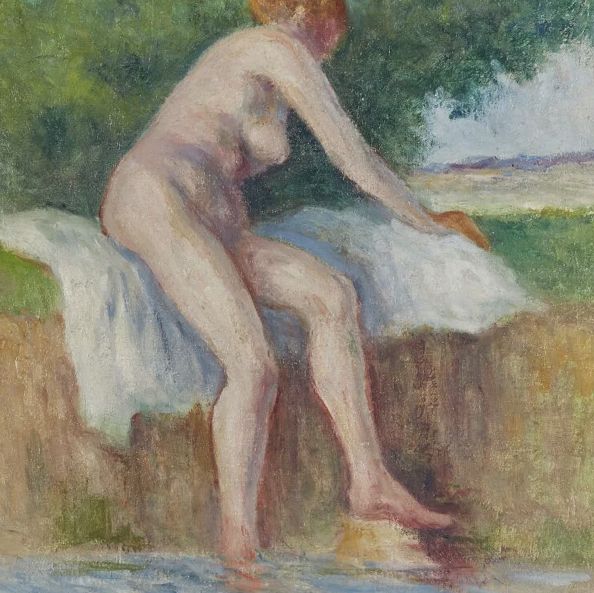
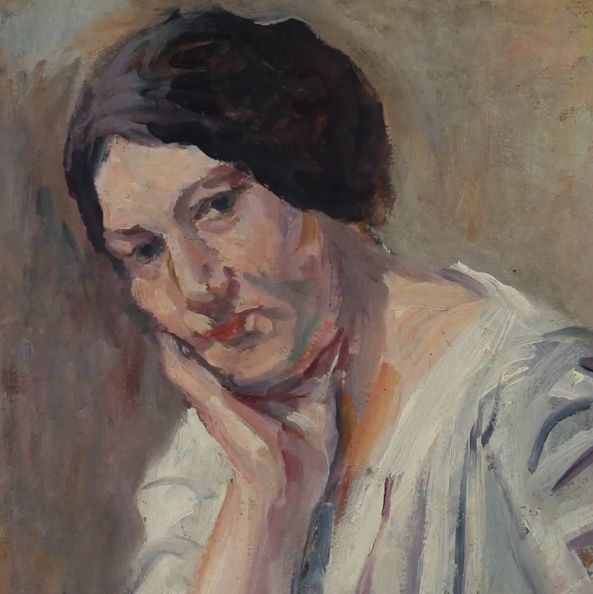
His signature
Not all Maximilien Luce's works are signed.
Although there are variations, here is a first example of its signature:
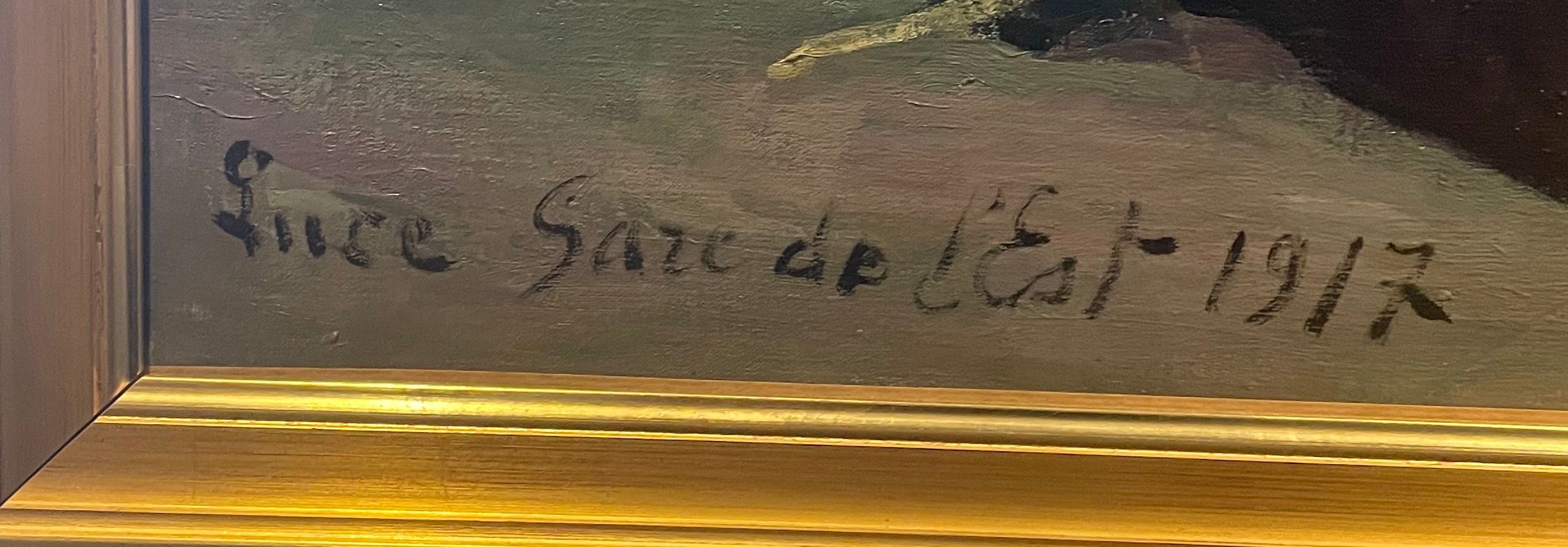
Appraising your property
If you own a work by Maximilien Luce, don't hesitate to request a free appraisal by filling in our online form. A member of our team of experts and certified auctioneers will contact you to provide an estimate of the market value of your Maximilien Luce work.
If you are considering selling your work, our specialists will also guide you through the various alternatives available to obtain the best possible price, taking into account market trends and the specific features of each work.
Response in less than 24h
Related topics
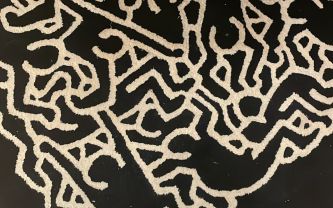
Rating and value of works, drawings, paintings by Keith Hari...
Keith Haring is a twentieth-century painter, draughtsman and graphic artist who produced drawings and paintings in a variety of media that are listed.
Read more >

Rating and value of works, sculptures by René Coutelle
René Coutelle is a twentieth-century contemporary artist who has produced refined sculptures that can be valuable at auction.
Read more >
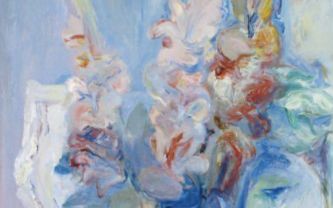
Rating and value of works, drawings, paintings by Yannis Gai...
Yannis Gaitis is a 20th-century Greek artist who produced highly-acclaimed oil paintings and drawings ranging from the figurative to the abstract.
Read more >
Secure site, anonymity preserved
State-approved auctioneer and expert
Free, certified estimates


